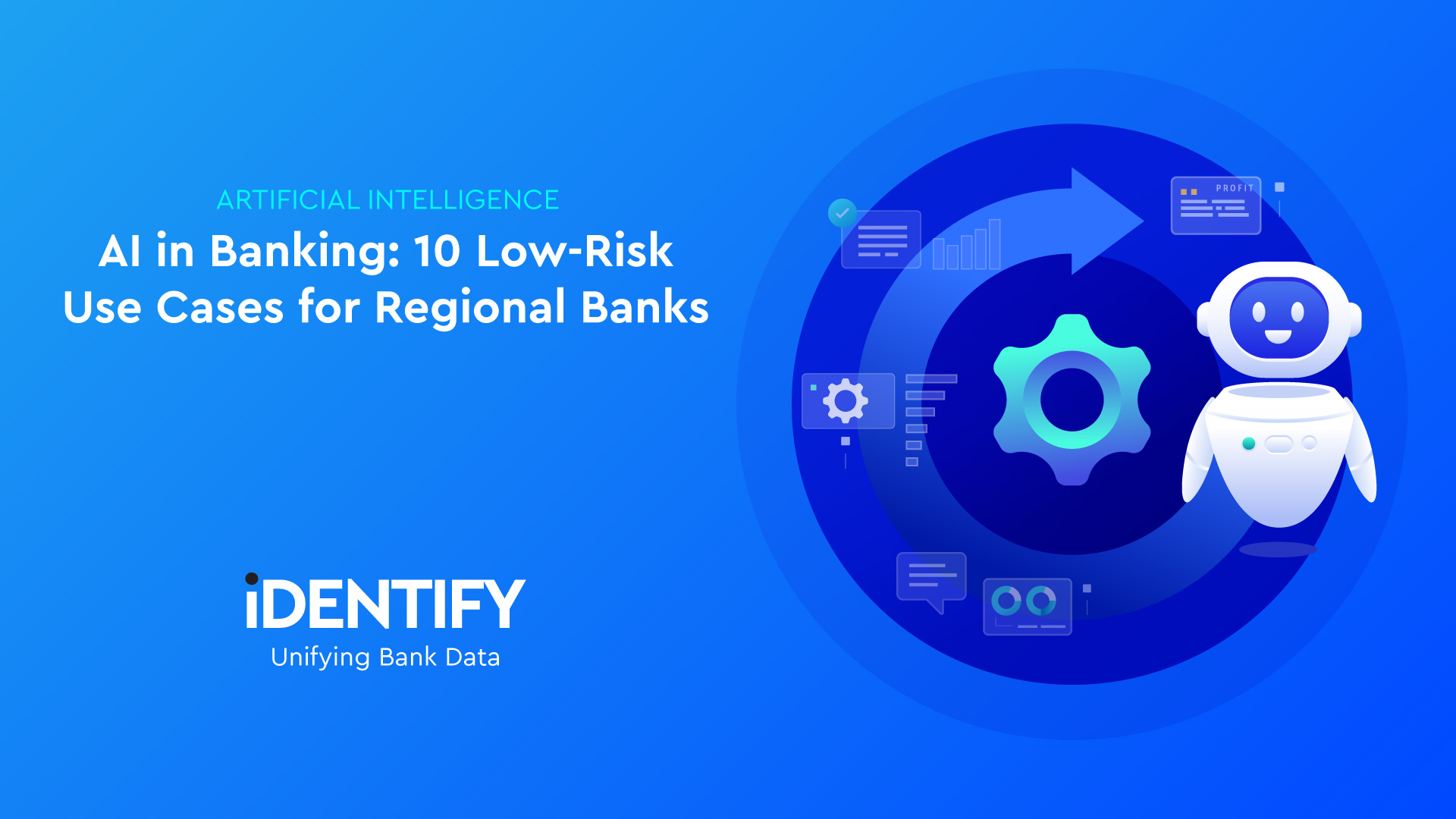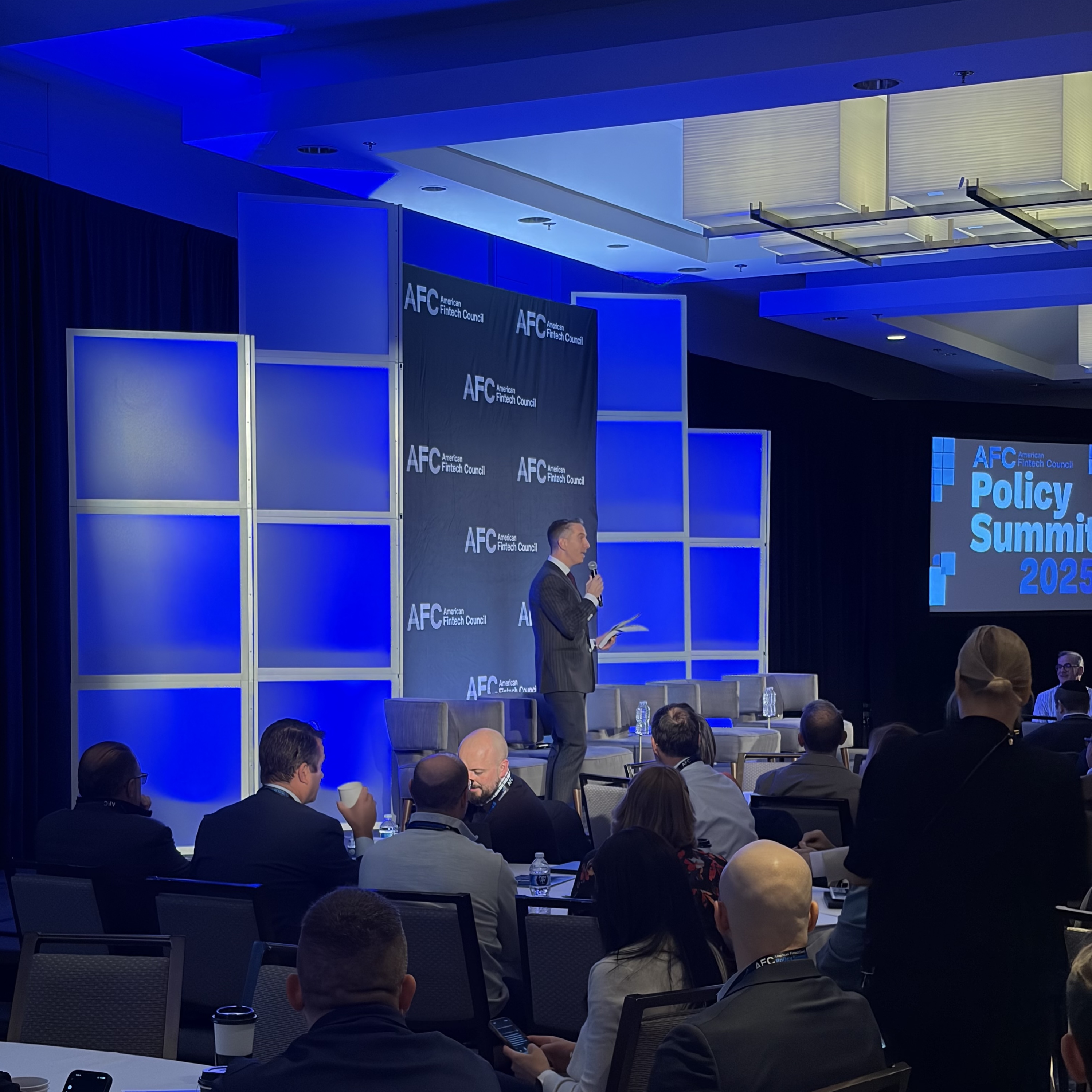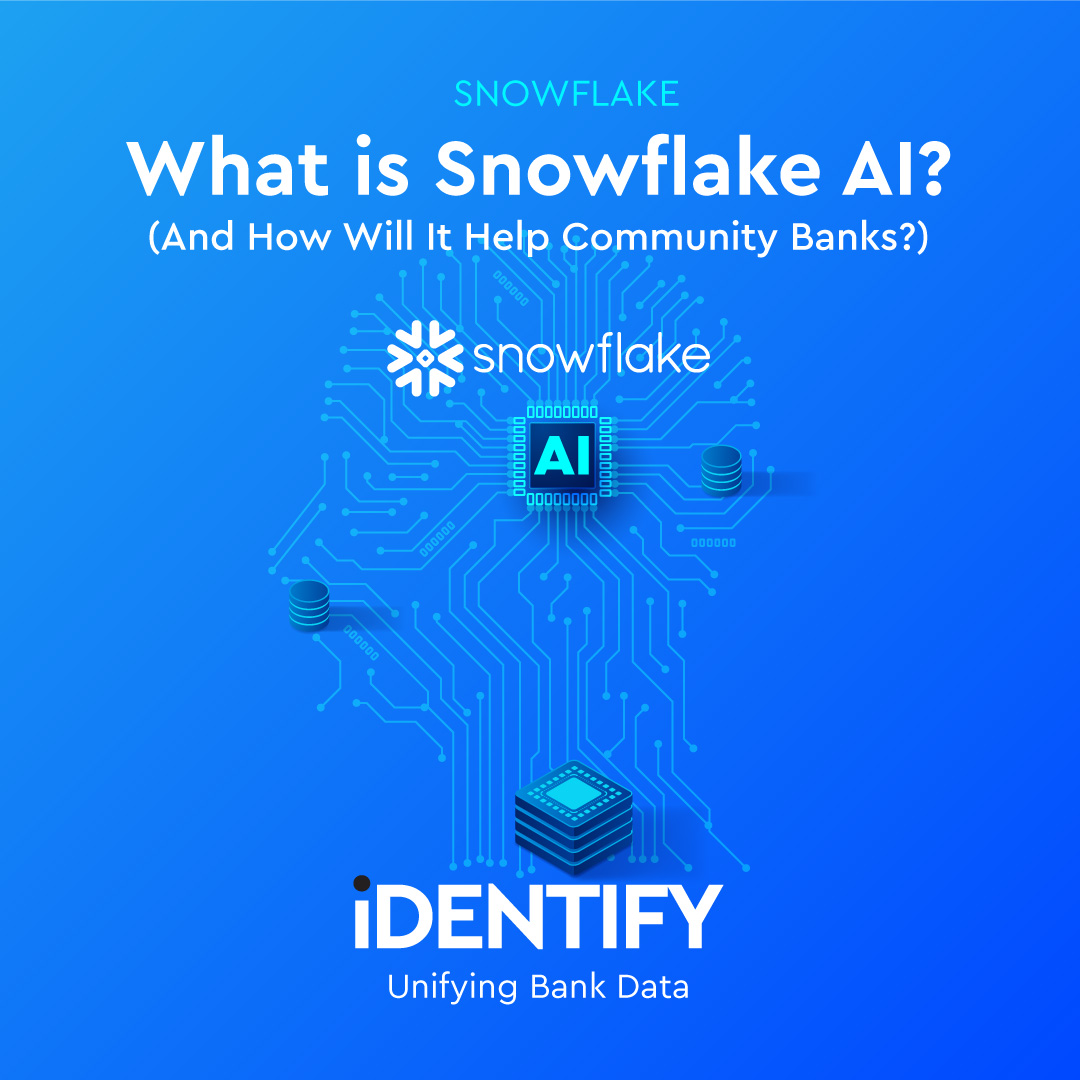
AI demos feel novel and maybe a little exciting, but implementation feels risky and even more so ambiguous. So, when someone at your bank asks what AI can do, what do you say?
Most community and regional banks aren’t held back by lack of ideas. They’re held back by three practical concerns:
- How do we stay inside regulatory expectations?
- How do we avoid adding risk or bias?
- How do we introduce AI without disrupting what already works?
Those concerns make the AI conversation feel bigger than it needs to be.
That’s why this guide focuses on the low-risk, high-value areas where banks are already seeing results, specifically, operational workflow improvements and customer-facing efficiencies that strengthen oversight rather than weaken it. Some of these use cases are true “easy wins,” and others fall into the intermediate or advanced category where governance and documentation matter.
To make that distinction clear, each idea includes:
- Ease to implement: Easy, Intermediate, or Advanced
- Regulatory complexity: Low, Moderate, or High
This helps your leadership team see what fits comfortably within existing guidance and what would require more robust controls if it became part of your future roadmap.
And as always, none of this works without trustworthy data. Before you experiment with prompts, copilots, or predictive models, your bank needs clarity and confidence in its data foundation. Our team helps banks unify fragmented systems, so every AI use case starts with clean, connected, and compliant data.
Learn About Our Process.
🟢 EASY USE CASES
Low risk, low regulatory burden, and minimal operational disruption.
1. Staff Training
Ease to Implement: Easy
Regulatory Complexity: Low
Good for: HR, branch managers, contact center leaders, trainers, operations leads
One of the most promising low-risk use cases for AI is training new staff.
A working paper from the National Bureau of Economic Research (NBER) followed more than 5,000 customer service agents at a Fortune 500 company that introduced an AI assistant to support live customer chats. Rather than acting as an automated response system, the AI provided guidance and feedback, helping agents phrase answers, suggest solutions, and learn from successful interactions as they worked.
Productivity improved by 14% on average, but the biggest gains came from newer team members. The AI effectively disseminated best practices from top performers, allowing less-experienced agents to ramp up faster. Within months, those agents improved by up to 35%, reaching mid-level performance two to three months sooner than before AI was introduced.
For community and regional banks, the same principle applies. AI can capture and share the institutional knowledge of your best people (the loan officer who asks just the right follow-up question, or the branch manager who diffuses a tense call) and make that know-how accessible to every new hire.
It turns experience into shared capability, so teams learn faster and perform more consistently.
2. Conversational Knowledge Base for Staff
Ease to Implement: Easy
Regulatory Complexity: Low
Good for: Operations, compliance, HR, IT / knowledge management teams
Every bank runs on policies. But for most employees, finding the right policy, form, or HR procedure still takes longer than it should.
Answers are scattered across PDFs, SharePoint folders, and binders buried in the intranet and every delay compounds into slower service, inconsistent answers, and compliance risk.
This is one of the areas that makes us really excited about Snowflake Intelligence.
This AI-powered search tool lives inside your intranet, Teams, or knowledge portal. It indexes internal manuals, compliance memos, and procedure guides so employees can ask questions in plain language and get policy-approved answers.
- For operations staff: Retrieve step-by-step guidance on handling exception items, CTR filings, or Reg CC holds.
- For compliance teams: Instantly compare policy language across versions to confirm the latest regulatory update.
- For managers and trainers: Summarize procedures for onboarding, audits, or policy refreshes.
You can also use the same architecture for an AI HR Helpdesk that responds to everyday employee questions like:
“How do I update my 401(k) contribution?”
“Where can I find the PTO policy for part-time employees?”
The AI drafts answers based on the employee handbook or HR portal, links to the source document, and flags when a query involves a sensitive topic that should be reviewed by HR.
This approach reduces repetitive emails, cuts internal response times, and ensures every answer reflects the latest version of company policy.
3. Pre-Exam Readiness
Ease to Implement: Easy
Regulatory Complexity: Low
Good for: Compliance, audit, risk, exam-prep working groups
When there is an exam date on the calendar, banks often have a sudden rush to locate documents, confirm policies, and verify that recent regulatory changes are reflected in every report.
With AI, your teams can create pre-exam readiness reports before the request arrives. The system continuously reviews internal documentation, prior exam findings, and recent regulatory updates to produce a concise, human-readable snapshot such as:
“Since the 2023 BSA/AML exam, two new FinCEN advisories were issued. Transaction-monitoring thresholds were updated in February 2025. Vendor due-diligence files for three high-risk partners were renewed.”
4. AI for Data Analytics & Ad-Hoc Reporting
Ease to Implement: Easy
Regulatory Complexity: Low
Good For: Executives, managers, analysts, reporting teams
One of the biggest operational gaps in community and regional banks is the time it takes to answer ad-hoc questions from executives, board members, and examiners.
These questions seem simple:
- “How did deposits trend last quarter?”
- “Which branches gained the most customers?”
- “Where are we seeing early portfolio stress?”
But answering them often requires analysts to pull multiple reports, reconcile systems, and format results, a process that can take hours or days.
With Snowflake Intelligence or Cortex Analyst, teams can simply ask the question in plain language:
- “What changed in loans this week?”
- “Which segments grew deposits fastest last quarter?”
- “Are there anomalies in fee income vs. last month?”
Snowflake translates the question into a SQL query, runs the analysis across unified data, and returns a clean, explainable answer.
This frees analysts from constant reporting tasks and lets leaders make decisions faster, using clear, consistent data instead of stitched-together spreadsheets.
🟡 INTERMEDIATE USE CASES
Moderate risk, some regulatory considerations. Requires governance + documentation.
(These influence workflows but do not independently automate customer decisions.)
5. Improving Regulatory Monitoring and Bank Policy Workflow
Ease to Implement: Intermediate
Regulatory Complexity: Moderate
Good For: Compliance officers, legal, policy owners, risk committees
Every new regulation sets off a familiar scramble inside community and regional banks: compliance teams receive the bulletin, legal begins analysis, and policy owners start asking, “Does this affect us?”
AI tools can continuously scan the OCC, FDIC, CFPB, FinCEN, NCUA, and state banking departments, plus trusted law and trade sources. It could summarize updates and organize them by domain, like BSA/AML, Fair Lending, Privacy, Cybersecurity, Vendor Risk. There are many publications and tools that offer this kind of service. And of course, you can use a standard tool like ChatGPT or Claude to get these lists curated.
But it’s not uncommon for the lag between awareness and action to span weeks or months.
But what if…
You used AI to close that gap by automatically comparing new or updated regulations against your internal policy library and highlighting what’s affected. You could connect it to company goals and prioritize work by risk.
It identifies matching language, overlapping topics, and related keywords, then produces a concise alert.
Here’s how it could work:
Alert: OCC Bulletin 2025-24: Examinations: Frequency and Scope for Community Banks overlaps with Policy 4.5 “Third-Party Risk Management” (Procedures Section 2.3, Monitoring & Contract Termination) and Control Manual Appendix B “Vendor Oversight Checklist”.
Reason: The bulletin emphasizes enhanced oversight of vendor/third-party relationships for community banks, aligning strongly with existing internal policy topics on vendor due diligence, monitoring, and termination.
So, instead of searching through hundreds of files, compliance leaders start their day knowing which policies to review and why.
Each alert links back to both documents, allowing policy owners to quickly review side by side. The system also logs the date and the user who acknowledged the alert, creating a transparent audit trail for exam readiness.
These capabilities are already becoming more available. For example, after CUBE acquired Thomson Reuters Regulatory Intelligence in 2025, they began combining TRRI’s rule-monitoring database (1,200+ regulators) with CUBE’s RegRule AI engine.
That system automatically tags each regulatory change with metadata such as topic, jurisdiction, and control type, then maps it to a firm’s internal policy library using semantic search.
6. Context Aware Prompting During Applications
Ease to Implement: Intermediate
Regulatory Complexity: Moderate
Good For: Retail/consumer lending, small business banking, digital banking & UX teams
(Likely requires more oversight due to customer-facing interactions.)
Loan and account applications are one of the most friction-filled moments in banking. Customers often start online, stall halfway through, and then need to call or visit a branch for clarification.
Through context-aware prompting, AI uses natural language processing and entity recognition to understand intent, detect incomplete inputs, and trigger relevant prompts.
Applications could respond to what a borrower writes or uploads like:
- You mentioned your business expanded, would you like to upload updated revenue?
- We noticed a different address on your document. Would you like to update your current mailing address or confirm it’s temporary?
These micro-prompts create a guided, human-like dialogue that reduces errors, missing documents, and back-and-forth communication.
For community banks, that means shorter review cycles, fewer manual corrections, and higher-quality applications ready for underwriting. It also provides customers a bit of simplicity when the process starts to feel ambiguous.
Veritex Community Bank modernized its in-branch and online account opening with MANTL’s adaptive origination platform, which adjusts questions and document requests based on each applicant’s inputs. The system’s dynamic logic and automated risk checks cut consumer account opening time from 87 minutes to 7, raised $100M in new deposits within 90 days, and drove 77% year-over-year growth without adding staff. By asking only what’s relevant, Veritex turned a static form into a guided, conversational experience that improved both efficiency and customer satisfaction.
An AI tool could go a step further and extract context from the application (like business expansion, new property, or life event) and feed into the CRM to trigger relevant follow-ups or financial education. Or it could pre-generate a risk summary or exception memo for the underwriter, showing how the applicant’s details changed and which areas might need human confirmation.
7. Personalized Service Recommendation
Ease to Implement: Intermediate
Regulatory Complexity: Moderate
Good For: Relationship managers, product teams, marketing, customer experience
We’re familiar with recommendation algorithms because we encounter them on Netflix, Amazon, and YouTube. With unified data, regional banks could offer the same service to their customers when they can more easily analyze deposit balances, transaction trends, loan utilization, and CRM notes. It can also surface proactive follow-ups, like alerting a banker when a CD is nearing maturity or suggesting treasury services when recurring transfers signal growth.
For example, if a customer’s business checking balance is up 25% since Q2; payments to equipment vendors have doubled, they may qualify for equipment financing.
🔴 ADVANCED USE CASES
Higher risk, higher regulatory oversight. Requires model governance, explainability, and human-in-the-loop controls.
8. Expanding what qualifies as credit worthiness
Ease to Implement: Advanced
Regulatory Complexity: High
Good For: Credit policy, underwriting, risk management, small business / consumer lending
(Because it touches on underwriting, alternative data, and potential bias considerations.)
Credit bureaus and FICO-style scores measure repayment history, outstanding debt, and credit length, which is usually reliable for established borrowers.
That narrow lens often forces community banks to say “no” to potentially strong borrowers simply because they don’t fit the mold.
By analyzing data like cash flow, deposit stability, rent and utility payments, and even verified business documentation, banks can see a borrower’s financial behavior in real time rather than just through legacy score snapshots.
Fannie Mae’s Desktop Underwriter (DU) system already applies this logic, and over the summer the Federal Housing Finance Agency (FHFA) announced lenders can “deliver mortgage loans using a credit score generated by either the Classic FICO model or the VantageScore 4.0 model.”
Community and regional banks that unify and analyze transaction data can create internal “credit readiness” models that surface promising borrowers who might otherwise be declined by a FICO-driven process.
For example:
- A gig worker whose deposits show consistent monthly inflows and stable expenses could qualify under a “cash flow resilience” score.
- A small business with seasonal swings but steady year-over-year growth could earn a stronger internal risk grade.
By blending internal transactional data with regulated alternative data, community banks can approve more borrowers responsibly, strengthen compliance narratives (“decisions based on verified financial behavior”), and build loyalty with younger and self-employed customers who feel unseen by traditional models.
9. Prioritizing Debt Collection
Ease to Implement: Advanced
Regulatory Complexity: Moderate to High
Good for: Collections teams, special assets / workout, retail lending leadership
(Because it influences customer treatment, which regulators scrutinize.)
Rather than treating all late payments the same, an AI system can identify those at greatest risk, by analyzing payment history, communication patterns, and account behavior.
For example, AI might flag that a borrower who has never missed a payment until now simply needs a reminder. But another might show multiple missed deposits and rising credit utilization, and they may need a personal call to discuss restructuring. The result is a smarter queue for collectors, where staff time goes to the people who need it most.
For community banks, this opens the door to a more empathetic, people centered approach. Tone analysis and prior interaction history can guide collectors toward language that preserves trust instead of straining it.
10. Proactive Fraud Detection
Ease to Implement: Advanced
Regulatory Complexity: High
Good for: Fraud and AML teams, digital banking, contact center leadership
(Fraud scoring + customer warnings = subject to model governance.)
At Money 20/20 USA 2025, Starling Bank presented their anti-scam app designed to help customers detect fraud before it happens. Instead of waiting for suspicious payments to clear or flagging accounts after loss, the tool gives customers an instant fraud risk score while they’re still deciding whether to send money.
How it works:
- A customer can paste a message, listing, or payment link from sites like Facebook Marketplace, eBay, Vinted, or Etsy into the app.
- The AI scans the content, comparing it to patterns from confirmed scams and analyzing language cues, account age, pricing anomalies, and urgency triggers (phrases like “limited offer” or “send deposit now”).
- Within seconds, the app displays a fraud-likelihood rating, for example:
“This seller profile matches characteristics of previously reported scams. Proceed with caution.” - If risk is high, the app recommends next steps such as verifying the merchant or using a protected payment method.
The AI model was trained on millions of historical scam reports, combining Starling’s internal fraud-pattern database with publicly shared datasets. It uses natural-language processing to interpret conversational context and anomaly detection to spot unusual account activity.
This proactive approach means customers get guidance before sending money, not apologies after it’s gone. It marks a shift from reactive fraud management to predictive customer protection, showing how AI can make fraud prevention feel like everyday advice rather than emergency response.
Every intercepted payment means avoided charge-offs, insurance claims, and investigation hours. Also, preventing a scam builds far more loyalty than reimbursing one.
Getting Ready for What’s Next
What’s possible with AI is getting more sophisticated, like faster onboarding, smarter policy management, more confident decisions, and customer experiences that feel genuinely personal. But each one relies on a foundation that many community and regional banks are still building: unified, trustworthy data that connects every part of the organization.
That’s what our team does best.
We help banks modernize the architecture beneath the tools by bringing fragmented systems into a single, compliant data environment where AI can actually deliver value.
When your data is unified, every use case becomes easier to test, safer to deploy, and faster to scale.
Schedule Time to Talk With Our Team Today









